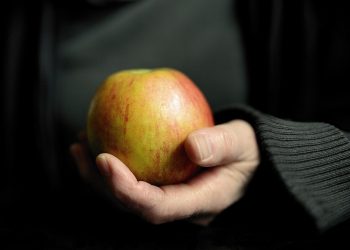Introduction to Intermittent Fasting and Weight Loss
Intermittent fasting (IF) isn’t a diet, it’s an eating pattern. It cycles between periods of eating and voluntary fasting on a regular schedule. Many people use intermittent fasting to manage their weight, improve their health, and simplify their lifestyles. The primary principle revolves around when you eat, rather than strictly what you eat, though the latter is still important for overall health and weight management.
The core idea behind intermittent fasting for weight loss is to create a calorie deficit. By restricting your eating window, you naturally tend to consume fewer calories overall. Additionally, fasting can lead to metabolic changes, such as increased fat burning and improved insulin sensitivity.
Popular Intermittent Fasting Methods
Several intermittent fasting methods exist, each with its own set of rules and schedules. Understanding these methods is crucial for selecting the one that best suits your lifestyle and goals.
- 16/8 Method: This is perhaps the most popular method. It involves fasting for 16 hours and eating within an 8-hour window. For example, you might eat between noon and 8 pm, and then fast until noon the next day.
- 5:2 Diet: This method involves eating normally for five days of the week and restricting calorie intake to around 500-600 calories on the other two non-consecutive days.
- Eat-Stop-Eat: This involves fasting for 24 hours once or twice a week. For example, you might eat dinner on Monday and then not eat again until dinner on Tuesday.
- Alternate-Day Fasting: This involves alternating between days of normal eating and days of severe calorie restriction (around 500 calories).
- Warrior Diet: This involves eating small amounts of raw fruits and vegetables during the day and then eating one large meal at night.
The 16/8 method is generally considered the easiest to adhere to for most people, making it a great starting point.
Intermittent Fasting Meals That Work: Focus on Nutrient-Dense Foods
While intermittent fasting focuses on timing, what you eat during your eating window is still crucial for successful weight loss and overall health. Focus on nutrient-dense foods that will keep you feeling full and satisfied, preventing overeating and cravings.
Prioritizing Protein
Protein is essential for building and repairing tissues, and it also helps you feel fuller for longer. Include a source of protein in every meal during your eating window.
- Lean Meats: Chicken breast, turkey breast, lean beef, and fish are excellent sources of protein.
- Eggs: Eggs are a complete protein source and are incredibly versatile.
- Legumes: Lentils, beans, and chickpeas are plant-based protein sources that are also high in fiber.
- Dairy: Greek yogurt, cottage cheese, and milk are good sources of protein and calcium.
- Protein Powder: Whey, casein, or plant-based protein powders can be used in smoothies or shakes to supplement your protein intake.
Example Meal: Grilled chicken breast with roasted vegetables (broccoli, bell peppers, and zucchini) and a side of quinoa.
Embracing Healthy Fats
Healthy fats are important for hormone production, brain function, and nutrient absorption. They also help you feel satiated, reducing the likelihood of overeating.
- Avocado: A versatile and creamy fruit that’s packed with healthy fats and fiber.
- Nuts and Seeds: Almonds, walnuts, chia seeds, flax seeds, and pumpkin seeds are excellent sources of healthy fats, fiber, and minerals.
- Olive Oil: Use olive oil for cooking and salad dressings.
- Fatty Fish: Salmon, tuna, and mackerel are rich in omega-3 fatty acids, which are beneficial for heart health.
Example Meal: Salmon baked with lemon and herbs, served with a side of roasted asparagus and a drizzle of olive oil.
Loading Up on Fiber-Rich Carbohydrates
Fiber helps regulate blood sugar levels, promotes digestive health, and keeps you feeling full. Choose complex carbohydrates over refined carbohydrates.
- Vegetables: Broccoli, spinach, kale, bell peppers, carrots, and zucchini are low in calories and high in fiber and vitamins.
- Fruits: Berries, apples, pears, and bananas are good sources of fiber and antioxidants.
- Whole Grains: Quinoa, brown rice, oats, and whole-wheat bread are better choices than white rice, white bread, and processed cereals.
- Legumes: Lentils, beans, and chickpeas are also good sources of carbohydrates.
Example Meal: Oatmeal with berries, nuts, and a sprinkle of chia seeds.
Sample Intermittent Fasting Meal Plans
Here are some sample meal plans for the 16/8 intermittent fasting method. Remember to adjust portion sizes based on your individual calorie needs.
Meal Plan 1 (Eating Window: 12 pm – 8 pm)
- 12:00 PM: Greek yogurt with berries and granola.
- 3:00 PM: Apple slices with almond butter.
- 6:00 PM: Grilled chicken salad with mixed greens, avocado, and a vinaigrette dressing.
Meal Plan 2 (Eating Window: 10 am – 6 pm)
- 10:00 AM: Scrambled eggs with spinach and whole-wheat toast.
- 1:00 PM: Leftover chicken and vegetable stir-fry.
- 5:00 PM: Salmon with roasted broccoli and quinoa.
Meal Plan 3 (Eating Window: 2 pm – 10 pm)
- 2:00 PM: Protein smoothie with spinach, banana, and almond milk.
- 6:00 PM: Lentil soup with a side of whole-grain bread.
- 9:00 PM: Cottage cheese with sliced peaches.
Important Note: These are just examples. Adjust the meal plans to fit your dietary preferences and calorie needs. Always consult with a healthcare professional or registered dietitian before starting any new diet or eating pattern.
Tips for Success with Intermittent Fasting
Intermittent fasting can be challenging at first, but with these tips, you can increase your chances of success.
- Start Slowly: Don’t jump into a strict fasting schedule right away. Gradually increase your fasting window over time. For example, start with a 12-hour fast and gradually increase it to 16 hours.
- Stay Hydrated: Drink plenty of water throughout the day, especially during your fasting window. Water can help you feel full and prevent dehydration. You can also drink unsweetened tea or black coffee.
- Listen to Your Body: Pay attention to how you feel during your fasting window. If you feel lightheaded, weak, or extremely hungry, it’s okay to break your fast.
- Plan Your Meals: Planning your meals in advance can help you make healthy choices and avoid impulsive eating.
- Be Consistent: Consistency is key to success with intermittent fasting. Try to stick to your fasting schedule as much as possible.
- Manage Stress: Stress can lead to cravings and overeating. Find healthy ways to manage stress, such as exercise, meditation, or spending time in nature.
- Get Enough Sleep: Sleep deprivation can disrupt your hormones and increase your appetite. Aim for 7-8 hours of sleep per night.
- Avoid Sugary Drinks and Processed Foods: These foods can sabotage your weight loss efforts and leave you feeling hungry and unsatisfied.
Potential Benefits of Intermittent Fasting Beyond Weight Loss
While weight loss is a common reason people try intermittent fasting, it offers several other potential health benefits:
- Improved Insulin Sensitivity: Intermittent fasting may help improve insulin sensitivity, which can reduce the risk of type 2 diabetes.
- Reduced Inflammation: Studies suggest that intermittent fasting may reduce inflammation in the body.
- Improved Brain Health: Some research indicates that intermittent fasting may improve brain function and protect against neurodegenerative diseases like Alzheimer’s.
- Cellular Repair: Intermittent fasting may promote cellular repair processes, such as autophagy.
- Heart Health: It might improve heart health markers like blood pressure, cholesterol levels, and triglycerides.
Who Should Avoid Intermittent Fasting?
Intermittent fasting isn’t suitable for everyone. Certain individuals should avoid it or consult with a healthcare professional before starting:
- Pregnant or Breastfeeding Women: These individuals need consistent nutrient intake.
- People with a History of Eating Disorders: Intermittent fasting can trigger or worsen eating disorders.
- People with Type 1 Diabetes: This type of diabetes requires careful management of insulin and blood sugar levels.
- People with Certain Medical Conditions: Those with conditions like adrenal fatigue or hypoglycemia should consult a doctor.
- People Taking Certain Medications: Some medications require consistent food intake.
Conclusion
Intermittent fasting can be a powerful tool for weight loss and overall health improvement. By focusing on nutrient-dense foods during your eating window and adhering to a consistent fasting schedule, you can reap the benefits of this eating pattern. Remember to listen to your body, start slowly, and consult with a healthcare professional before making any significant changes to your diet or lifestyle. The key to success lies in finding an intermittent fasting method that aligns with your individual needs and preferences, making it a sustainable part of your life.
Frequently Asked Questions (FAQs)
- Q: Is intermittent fasting safe?
- A: For most healthy adults, intermittent fasting is generally safe. However, it’s crucial to consult with a healthcare professional before starting, especially if you have any underlying health conditions or are taking medications.
- Q: Can I exercise while intermittent fasting?
- A: Yes, you can exercise while intermittent fasting. However, it’s essential to listen to your body and adjust your workout intensity accordingly. Consider scheduling your workouts during your eating window for optimal energy levels.
- Q: What can I drink during my fasting window?
- A: You can drink water, black coffee, unsweetened tea, and other zero-calorie beverages during your fasting window. Avoid sugary drinks and artificially sweetened beverages, as they can trigger an insulin response and break your fast.
- Q: Will intermittent fasting make me lose muscle?
- A: If you consume adequate protein and engage in resistance training, you can minimize muscle loss while intermittent fasting. Prioritize protein intake during your eating window.
- Q: How long does it take to see results with intermittent fasting?
- A: The time it takes to see results with intermittent fasting varies depending on individual factors such as metabolism, diet, and activity level. Some people may start seeing results within a few weeks, while others may take longer. Consistency is key.
- Q: Can I do intermittent fasting long-term?
- A: Intermittent fasting can be a sustainable lifestyle choice for many people. However, it’s essential to listen to your body and adjust your eating pattern as needed. If you experience any negative side effects, consult with a healthcare professional.
- Q: What happens if I accidentally break my fast?
- A: Don’t worry if you accidentally break your fast. Simply resume your fasting schedule as planned. One slip-up won’t derail your progress.
- Q: How do I choose the right intermittent fasting method for me?
- A: Consider your lifestyle, preferences, and goals when choosing an intermittent fasting method. The 16/8 method is a good starting point for many people. Experiment with different methods to find the one that works best for you.
- Q: Is intermittent fasting better than traditional dieting?
- A: Intermittent fasting can be an effective weight loss strategy for some people, but it’s not necessarily better than traditional dieting. The best approach is the one that you can adhere to consistently and that supports your overall health.
- Q: Can intermittent fasting help with cravings?
- A: Yes, intermittent fasting can potentially help reduce cravings over time. By regulating blood sugar levels and improving insulin sensitivity, it may help stabilize your appetite and reduce cravings for unhealthy foods.












